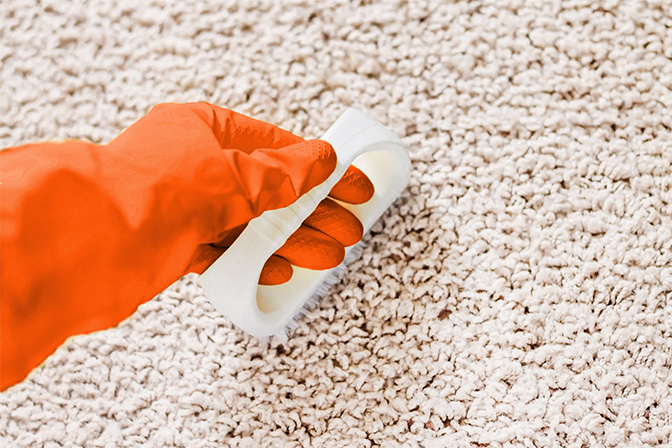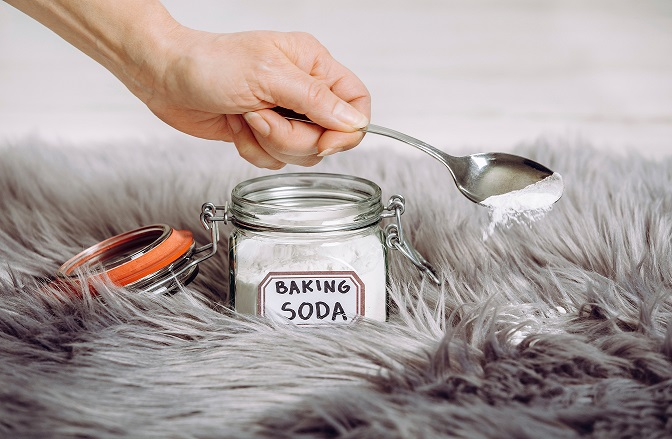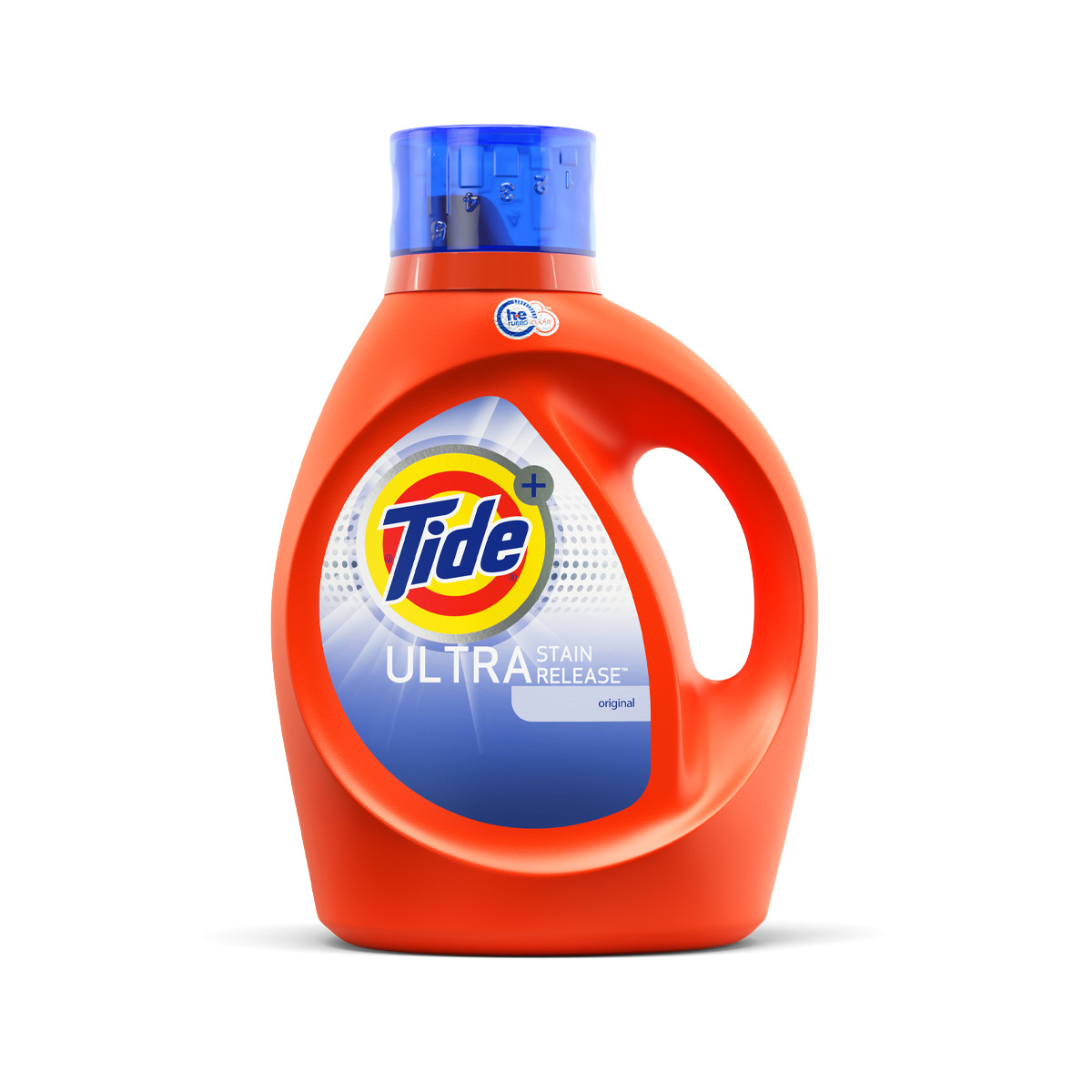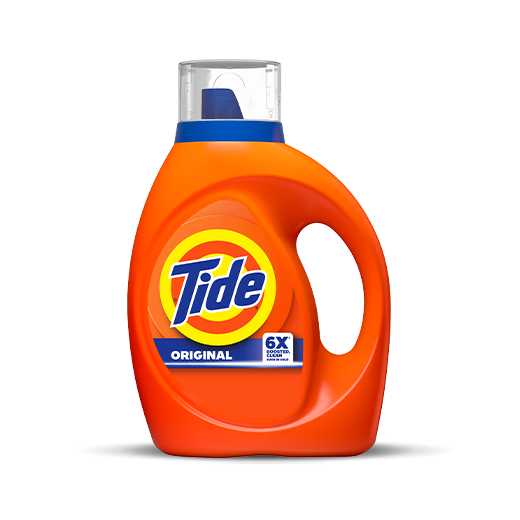How to Remove Dirt and Stains from Carpet
Understanding how to clean a carpet properly will help extend the life of your flooring as well as help keep it looking as good as the day it was installed. Steps for cleaning carpet or area rugs can vary depending on the material you’re cleaning, what colors or dyes may be present in the fibers, and what type of dirt or stain you need to remove. Whether you’re looking for directions on how to remove stains from carpet or how to clean carpet with household products you may have in your cupboard, you’ll need to adjust your cleaning approach accordingly.

How to Remove Stains from Carpet
Learning how to remove stains from carpet may seem like a daunting task at first, but the good news is that you probably have many household cleaners just ready and waiting among your existing cleaning supplies up that are up to the task of cleaning carpet stains, particularly smaller ones. Household items like laundry stain remover, dish soap, and even enzyme liquid detergents like Tide Ultra Stain Release can not only help remove carpet stains but also keep your carpets feeling fresh and looking stain-free.
Before applying any cleaning solution to your carpet, you should always spot test in an inconspicuous area—particularly with heavily dyed carpets or rugs—to ensure that the chemical you’re using won’t stain or discolor your carpet. Cleaning solutions can vary depending on the pile height, material, and color of your carpet.
Finally, you should always try to get to stains fast. The sooner you can get to them, the better in terms of getting your carpet clean. A fresh stain hasn’t had time to set yet, so cleaning right away gives you the best chance of getting a stain out of your carpet once and for all.
Before you begin, you will need:
A clean bucket for mixing your cleaning solution
Vacuum cleaner
Clean, soft, white towels
Soft-bristled brush to scrub
Step 1: Remove Dust, Dirt, and Debris
Vacuum any loose dirt or debris from the soiled area of your carpet. Follow by rinsing the stained area with cold water to prepare the area for cleaning. If the stain is wet, soak up as much of it as you can using a soft white cloth, working from the outside of the stain inward to prevent spreading.
Step 2: Mix Your Tide Cleaning Solution
Using your favorite Tide Ultra Stain Release Liquid Detergent mix a cleaning solution in your bucket that’s ½ cap of detergent per 1 gallon of water. Using cold water will help prevent any fading on dyed carpets.
Step 3: Test Colorfastness
In an inconspicuous area of your carpet, test the cleaning solution using a sponge or your clean white cloth, applying a bit of the cleaner and gently rubbing into the carpet fibers. Check your cloth for bleeding colors and if no color transfer occurs, you’re safe to continue.
Step 4: Wash Your Carpet
Using one of your clean white cloths, soak in your cleaning solution, then apply over the surface of the stain, gently rubbing at the stain. As you remove stains from carpet, working the cloth from the outer edge to the center can help prevent the stain from expanding into clean areas of your carpet. Also take care that you’re not applying too much pressure, pushing the stain deeper into your carpet or padding.
Step 5: Rinse with Cold Water
Using clean, cold water, rinse the stain until it’s free of cleaner. Once you’re satisfied that the cleaning solution is removed, you can assess the stain and see if a repeat of step 4 is necessary.
Step 6: Dry the Carpet
Once you’re satisfied with the stain removal, you can use a clean towel to soak up as much remaining water as possible to dry the carpet. If you have an oscillating or box fan, try placing it pointed at the damp patch of clean carpet to help dry more quickly.
Step 7: Vacuum
You may find that some of the fabric or threads of your carpet look a bit out of place once they’re fully dry. You may need to run a vacuum over the area to make your carpet threads look more uniform.
How to clean Greasy stains from carpet
Greasy stains can be very hard to remove due to the oils and other residues they contain. These typically attract and hold onto dirt, leaving you with tougher stains to fight. Often, no matter how hard you try to clean a grease stain, an outline will remain. If you find yourself faced with a grease stain on your carpet, follow these simple steps to remove them.
Step 1: Rinse
If possible, rinse the stained area as soon as the stain occurs. The more quickly you can attend to a stain, the less likely it will set into the fibers of your carpet.
Step 2: Apply Detergent
Using a liquid laundry detergent like Tide Ultra Stain Release Liquid Detergent, apply directly to the stain and let it sit for a few minutes.
Step 3: Rinse
Rinse with area cold water. Repeat process from step 2 if stain persists.
How to clean Non-greasy stains from carpet
Non-greasy stains are generally easier to handle but present their own unique challenges. Since these don’t contain much residue, they are less stubborn and easier to remove.
Step 1: Rinse
Getting to the stain as soon as possible will help remove it more easily. Using cold water, rinse the area with a damp, clean, white cloth, removing as much excess as possible.
Step 2: Apply Detergent
Mix half a cap of Tide Ultra Stain Release Liquid Detergent in a gallon of clean cold water. Using a soft bristled brush or clean white cloth, gently work from outside in, dabbing at the stain to cover it with cleaner.
Step 3: Rinse
Rinse area with cold water. Repeat the process from step 2 if stain persists.
How to clean carpet with baking soda
Not only is baking soda a common household substance with dozens of uses, it’s also a perfect choice for cleaning and deodorizing carpets or rugs that have become soiled. One of the most versatile tools in your cleaning arsenal, baking soda is a mild alkali that works with water to help dissolve dirt and lift it from fabrics for easier removal. Gentle and safe for most materials, how you clean carpet with baking soda will depend on the type of stain you’re looking to remove. For example, you can fully dissolve baking soda in a solution for cleaning or you can dampen it so that it also acts as a mild abrasive, lifting dirt and stains more forcefully.

Cleaning Non-greasy stains from carpet with baking soda
Generally easier to remove than grease stains, non-greasy stains respond particularly well to baking soda.
Step 1: Test for Colorfastness
If it’s your first time cleaning your carpet, it’s always advisable to spot test any cleaning solution in an inconspicuous area first. Mix half a tablespoon of baking soda into a cup of water and apply to the carpet. Let it dry, then vacuum.
Step 2: Apply Baking Soda
Sprinkle baking soda over the stain, covering the spot thoroughly. Dampen a clean white towel or cloth that will be able to cover the stain. Cloth should be damp, but not dripping, and placed on top of the stain for at least 3 hours.
Step 3: Remove and Vacuum
Remove the towel and run a vacuum over the carpet. If you’re unsatisfied, repeat the process from step 2.
Cleaning Greasy stains from carpet with baking soda
Because of the oils and residues left by these stains, they can become particularly stubborn, especially if they’re left untended. The earlier you can begin to treat a stain, the better your chances of completely removing it, particularly when greasy substances are involved.
But this is also where baking soda can shine. Applied to a sponge or cloth and wet with water, baking soda can work to break up grease, lift dirt, and get the stain out of your carpet. Read below for step-by-step instructions on how to clean carpet with baking soda.
Step 1: Test for Colorfastness
This should always be your first step before testing any cleaning method on your carpet for the first time. Apply some baking soda to a sponge, wet it into a paste, and work into an inconspicuous corner of the carpet. Allow it to dry, then clean up and survey the results. If the carpet looks fine and no color has bled, you’re safe to proceed.
Step 2: Remove Excess Dirt
Using a soft paper towel, sponge, or cloth, press into the stain to remove as much grease as possible. Don’t rub or scrub at the stain as this can push the residues into the carpet fibers more, making the stain more difficult to remove.
Step 3: Add Baking Soda
Due to the added toughness of greasy stains, the abrasive cleaning power of partially dissolved baking soda can work wonders. Sprinkle the stain with baking soda, covering it completely in a thin layer. How long you leave baking soda on carpet will affect its cleaning power. Allow the baking soda to sit on the stain for at least three hours or overnight, if possible. The longer the baking soda rests on the stain, the more of the oily residues it will be able to absorb.
Step 4: Vacuum
Vacuum the stain once the baking soda has had ample time to work its magic. If any of the stain remains, repeat from step 3 until you are satisfied. If any of the stain remains after your second or third pass, there are some other things you can try.
Add a small amount of Tide Ultra Stain Release Liquid Detergent on a damp, clean towel or sponge. Blot at the stain without rubbing, then rinse with a warm, damp towel, being careful to press, not rub. Dry with a clean towel, sprinkle another layer of baking soda on the carpet and let it sit overnight. Vacuum the area the next day and the stain should be gone.
How to deodorize carpet
One of the other fantastic properties of baking soda is its ability to neutralize odors, even on carpets. So, whether you’re treating a stain or simply looking to deodorize carpet, baking soda is a great tool.
You can pour baking soda directly on top of a dry or wet carpet to fight odors. The baking soda will absorb odors on a dry carpet but will also help to dry out a damp carpet as it fights odors. Always allow the baking soda to sit for at least thirty minutes, but overnight is ideal for maximum odor-fighting power. Once enough time has passed, you can simply vacuum up the residue and voila!
Products to wash carpets
Tide Ultra Stain Release Liquid Laundry Detergent
Tide Original Liquid Laundry Detergent








